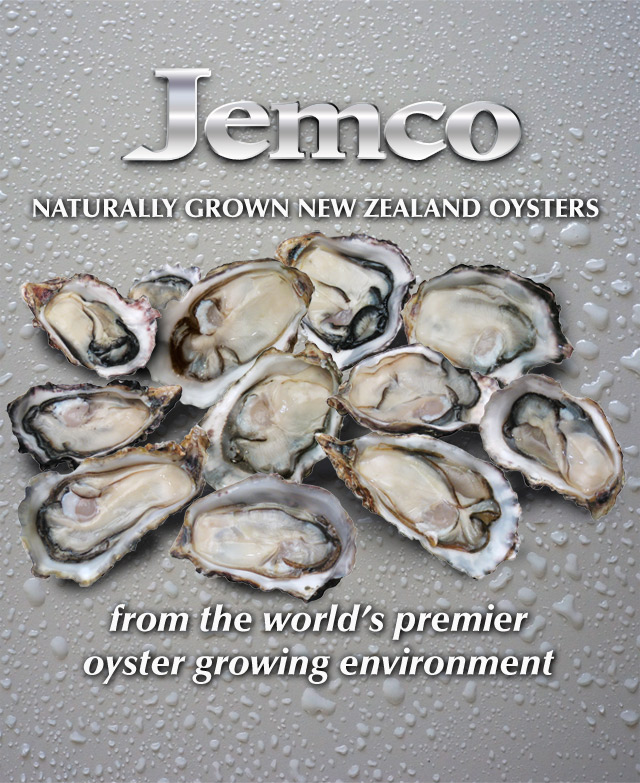
| JEMCO OYSTERS | OTHER COUNTRIES |
| High quality growing waters Which are continuously monitored for natural and other hazards |
Grown in waters compromised by intense human activities Often little or inadequate quality monitoring for pollution, microbiological dangers and algal biotoxins |
| Starts with naturally occurring spat selected over many years by nature to grow well and be healthy in our natural environment | Spat produced by hatcheries after selection by the aquaculturist for features convenient for artificial cultivation rather than the health of the oysters Oysters often treated with chemicals to induce spawning or to genetically alter the oysters (polyploids) to cause sterility and make the oysters fatter |
| Oysters are harvested from clean growing waters when naturally in peak condition Processed immediately to allow freezing or shipping chilled within hours of harvest No treatment is required to ensure a safe product |
Oysters harvested from often potentially unsafe waters and treated (depurated) to reduce indicator bacteria and allow them to pass the usual microbiological tests Depuration delays processing for several days after harvesting Bacteria can be further reduced by chemical or pressure treatment after processing. Viruses and algal toxins remain a risk |
| Extremely fresh and safe The oysters are completely free from chemical contamination, microbiological or algal hazards or genetic alteration |
Oysters can be harvested many days before processing to allow for depuration increasing the amount of spoilage organisms Virus and chemical hazards can be present and the effects of genetic manipulation are unknown in the long term |